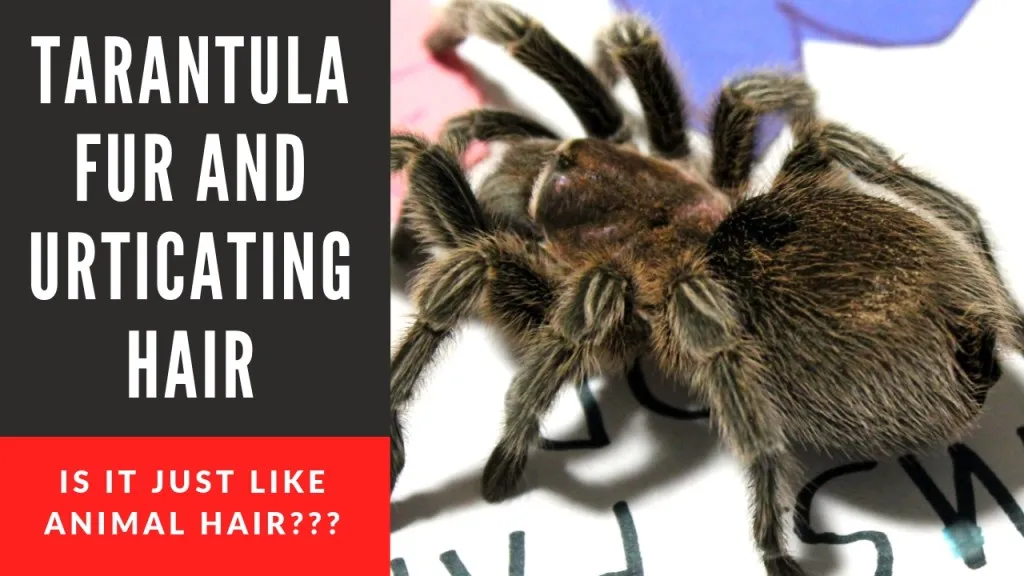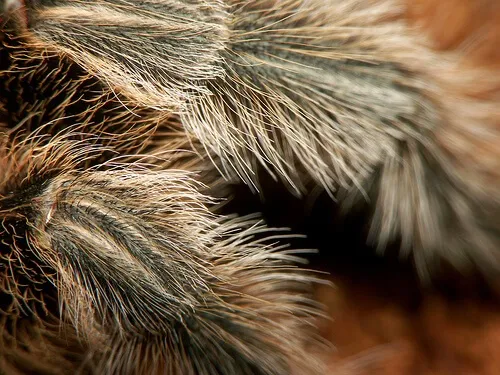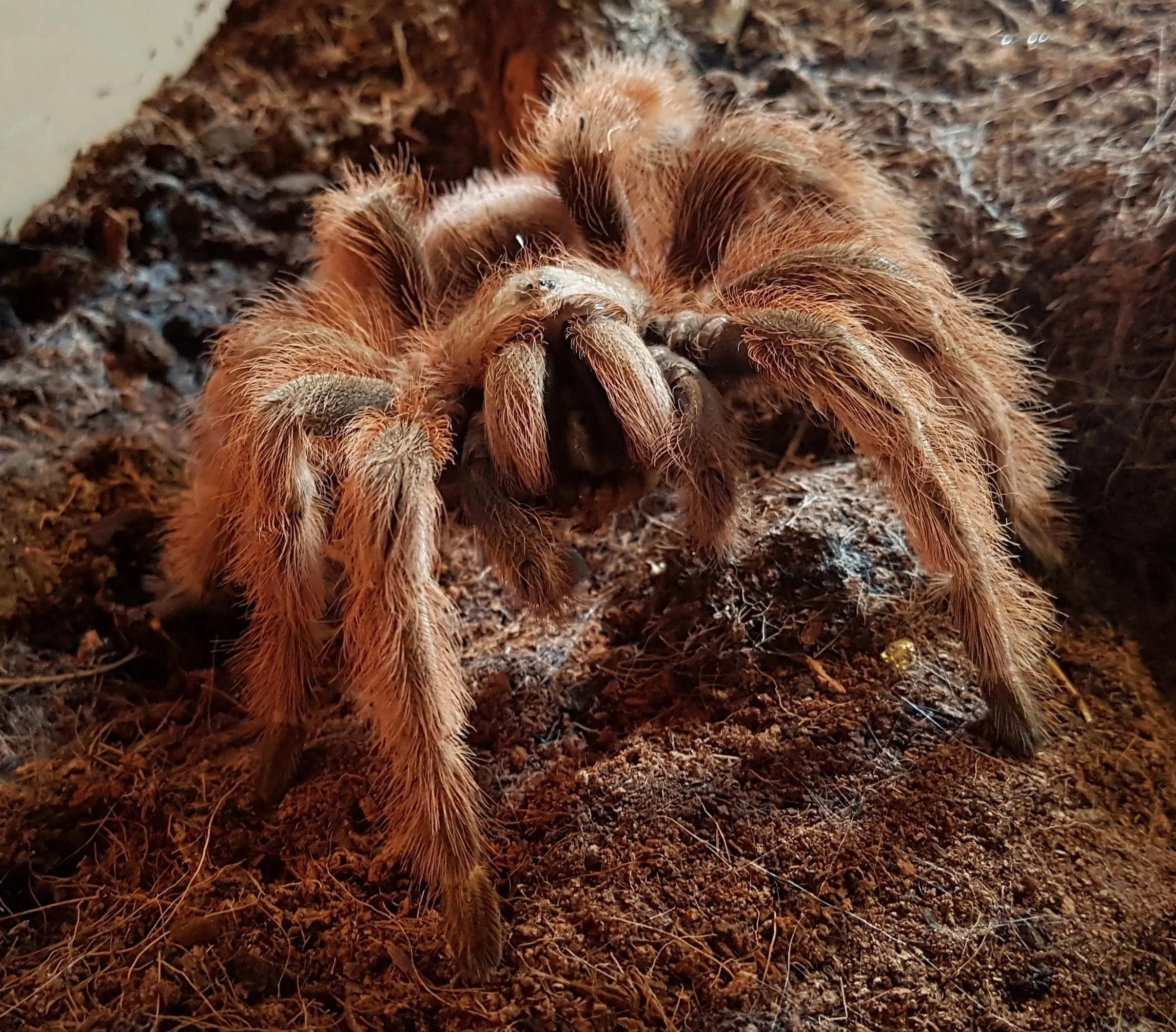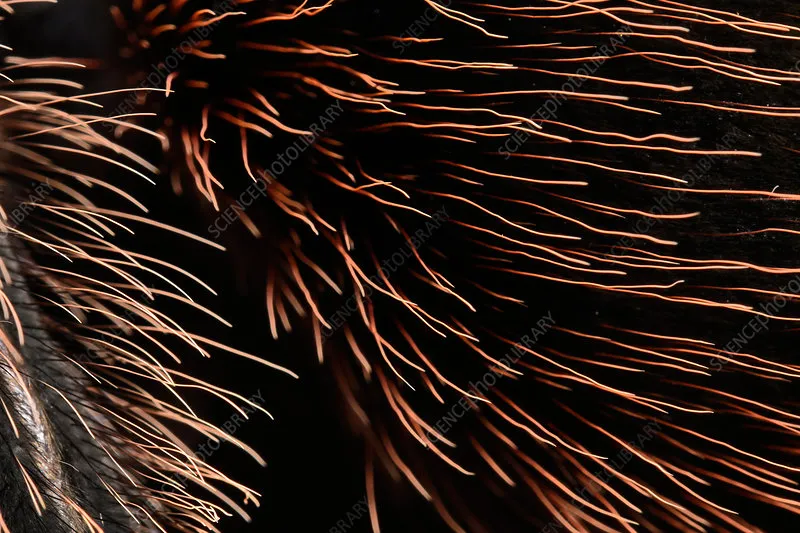What are Urticating Hairs
Urticating hairs are a unique defense mechanism found in many tarantula species. These hairs are specialized bristles located on the abdomen of the spider. They are not just ordinary hairs, they are designed to irritate and cause discomfort to potential predators. When a tarantula feels threatened, it will often flick these hairs towards the perceived threat. This can be a very effective deterrent, as the hairs embed themselves in the skin or eyes of the attacker, causing itching, inflammation, and pain. The presence or absence of these hairs can significantly influence how we interact with and care for different tarantula species.
The Purpose of Urticating Hairs
The primary purpose of urticating hairs is defense. Tarantulas are vulnerable to various predators, including birds, lizards, and other larger arachnids. When a tarantula feels threatened, it rubs its hind legs against its abdomen, releasing a cloud of these irritating hairs. These hairs are designed to deter the predator by causing intense itching and irritation, forcing the predator to retreat. This defense mechanism gives the tarantula time to escape or seek a safer location. The effectiveness of urticating hairs varies among different tarantula species, with some having more potent and irritating hairs than others. Understanding this defense is important for tarantula keepers, as it influences how we handle and interact with these creatures.
How Urticating Hairs Work

Urticating hairs operate through a combination of physical and chemical irritation. The hairs themselves are microscopic, barbed structures that easily penetrate the skin or mucous membranes. Once embedded, these hairs cause intense itching and inflammation. Additionally, some tarantula species may have a mild toxin associated with their urticating hairs, which enhances the irritation and discomfort. The hairs are often released in a cloud, ensuring they make contact with the potential threat, even if the initial aim is not perfect. This efficient delivery system makes urticating hairs a very successful defense mechanism. The severity of the reaction can vary, but it is generally unpleasant, discouraging predators from future attacks. The hairs’ durability and persistence further contribute to their effectiveness as a long-lasting deterrent.
Top 5 Tarantula Species Without Urticating Hairs
While the majority of tarantula species possess urticating hairs, there are some fascinating exceptions. These species have evolved alternative defense mechanisms or simply lack the specialized bristles. This absence makes them unique and often sought after by tarantula enthusiasts. Here are five notable tarantula species that do not have urticating hairs, making them stand out in the arachnid world.
Avicularia Genus
The Avicularia genus, commonly known as the pinktoe tarantulas, is a well-known example of a tarantula group without urticating hairs. These arboreal tarantulas rely on other defensive strategies, such as speed and a willingness to bite. They are also known for their docile nature compared to many other tarantula species. Their vibrant colors and arboreal lifestyle make them popular choices for both beginner and experienced keepers. Species like the Pinktoe tarantula are a testament to the diversity within the tarantula family, demonstrating the evolution of different survival strategies.
Holothele Genus

The Holothele genus offers another example of tarantulas without urticating hairs. These spiders often have a more secretive nature and rely on camouflage and quick retreats to avoid danger. While they may possess other defense mechanisms, such as a bite, the lack of urticating hairs simplifies handling. The Holothele genus can be a good choice for those interested in observing different defense mechanisms in tarantulas and prefer a less irritating interaction with their pet. Their care requirements are generally similar to other tarantulas but may require adjustments based on their specific behaviors.
Psalmopoeus Genus
The Psalmopoeus genus is another group where urticating hairs are typically absent. Known for their arboreal habits and relatively fast movements, these tarantulas rely on agility and a willingness to bite as primary defense strategies. They are often brightly colored and can be quite active, making them interesting to observe. Due to their speed, they may require extra care during handling to avoid accidental bites or escapes. Their unique characteristics provide tarantula enthusiasts with engaging specimens that differ from the more common urticating-hair-equipped species.
Ephebopus Genus
The Ephebopus genus is another example of tarantulas that do not possess urticating hairs. These spiders are often found in terrestrial environments and rely on a combination of camouflage and speed for defense. The absence of urticating hairs can make them slightly easier to handle, although caution is still advised due to their potential to bite. Their care requirements are typical for terrestrial tarantulas, and their unique characteristics make them a fascinating option for tarantula keepers looking for something different.
Stromatopelma Genus

The Stromatopelma genus offers another instance of tarantulas that don’t have urticating hairs. These spiders are often arboreal and possess various defensive strategies, including a quick retreat. The absence of urticating hairs makes handling them a bit different compared to other tarantulas. These tarantulas can be a captivating addition to a collection due to their unique characteristics and arboreal lifestyle. It’s essential to be mindful of their agility when handling them.
Advantages of Being Hairless
The absence of urticating hairs provides several advantages to both the tarantula and the keeper. For the tarantula, it can mean fewer grooming requirements, as the need to remove shed hairs from their bodies is reduced. For the keeper, it simplifies handling to some extent, reducing the risk of irritation if the tarantula flicks its legs. This creates a more engaging experience, allowing for closer observation and interaction with the tarantula. However, it is important to remember that the tarantula may compensate for this lack of defense by resorting to biting as a primary defensive mechanism.
Simplified Grooming
Tarantulas with urticating hairs spend considerable time grooming to remove the hairs that they have shed. Without these hairs, tarantulas can experience a simplified grooming routine. This can be less stressful for the tarantula. Moreover, keepers will also have a cleaner environment because the irritation caused by urticating hairs will be minimized. This will enhance the overall care and interaction with the tarantula. It also means less time spent cleaning up and mitigating the effects of those irritating hairs.
Defense Mechanisms

While hairless tarantulas lack urticating hairs, they employ other defense mechanisms. These may include a strong bite, the ability to run quickly, and camouflage. Some species are also more prone to hiding or retreating. These alternative defenses have evolved to compensate for the absence of urticating hairs. Keepers should understand these defense methods to handle the tarantula safely and provide the best possible environment. By observing the tarantula’s behavior, keepers can determine its unique strategies and adapt their care accordingly.
Considerations for Keeping Hairless Tarantulas
Although the lack of urticating hairs may seem like an advantage, it is important to consider other factors when keeping these tarantulas. These spiders still require the same level of care, including proper habitat, feeding, and handling practices. It is essential to research the specific needs of each species. Also, be aware that the tarantula may have other defense mechanisms that can cause harm if not handled properly. Understanding these factors will enhance the overall well-being of the tarantula and make the experience more enjoyable for the keeper.
Handling Precautions
When handling hairless tarantulas, it is crucial to take extra precautions. These spiders may be more prone to biting than species with urticating hairs. Keepers should avoid sudden movements and always handle the tarantula over a soft surface, like a bed or a carpet, in case it falls. Always wash your hands before and after handling the tarantula to maintain cleanliness and to minimize the transfer of scents that could agitate the spider. Consider using gloves or tools like tongs if you’re not comfortable with direct handling. Observe the tarantula’s behavior and recognize signs of stress, such as raising its front legs or displaying a defensive posture, and adjust your actions accordingly.
Habitat and Enclosure

The habitat requirements for tarantulas without urticating hairs are similar to those of other species. The enclosure should be appropriate for the tarantula’s size and type, whether terrestrial or arboreal. It should also have adequate ventilation, a secure lid, and a suitable substrate to maintain humidity. Provide hiding places, such as cork bark or artificial plants, to allow the tarantula to feel secure. Maintain the correct temperature and humidity levels to ensure the tarantula’s health and well-being. Cleaning the enclosure regularly is essential to prevent the buildup of waste and maintain a healthy environment for the spider. Proper habitat is one of the most important aspects of tarantula care.
